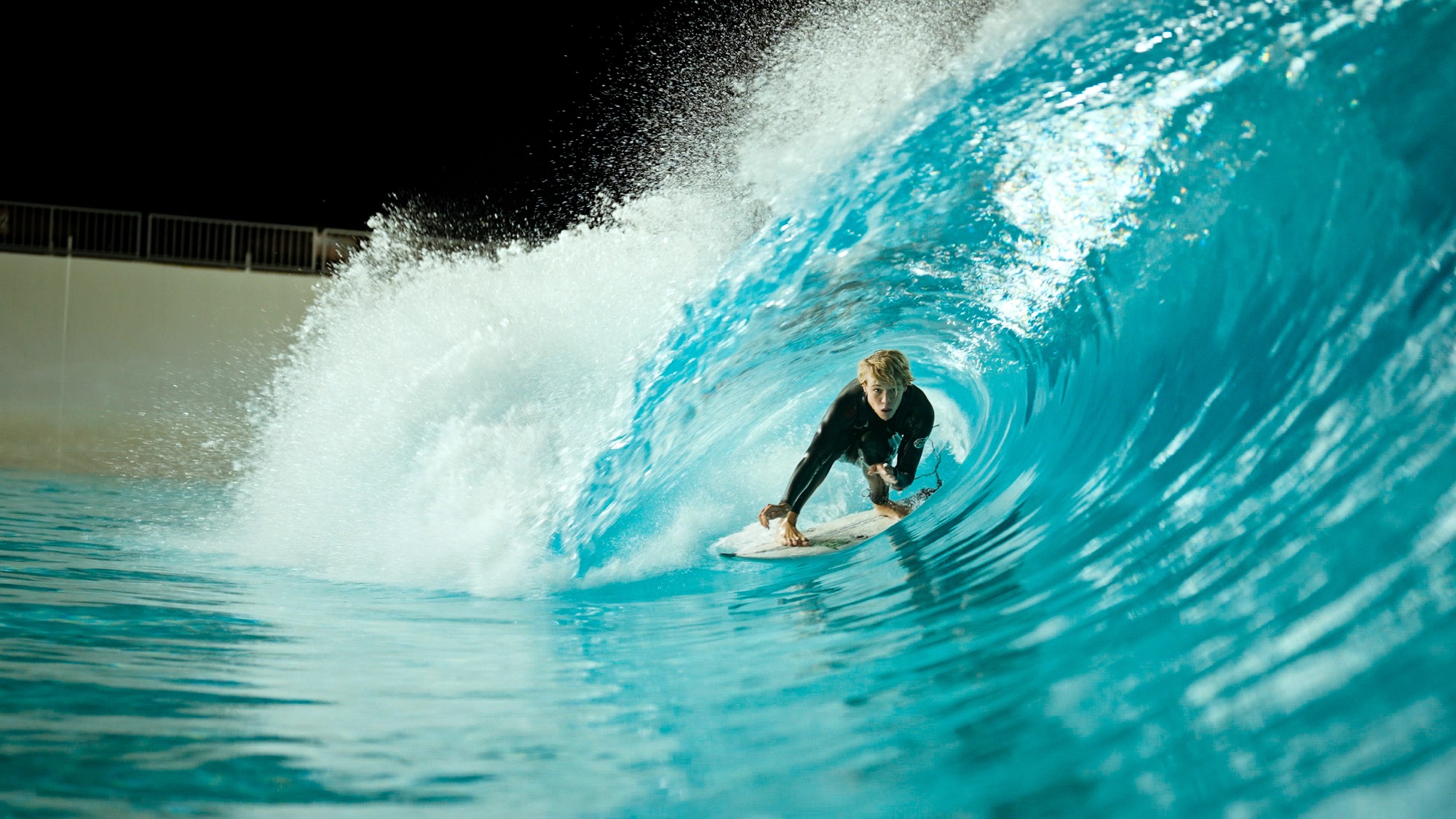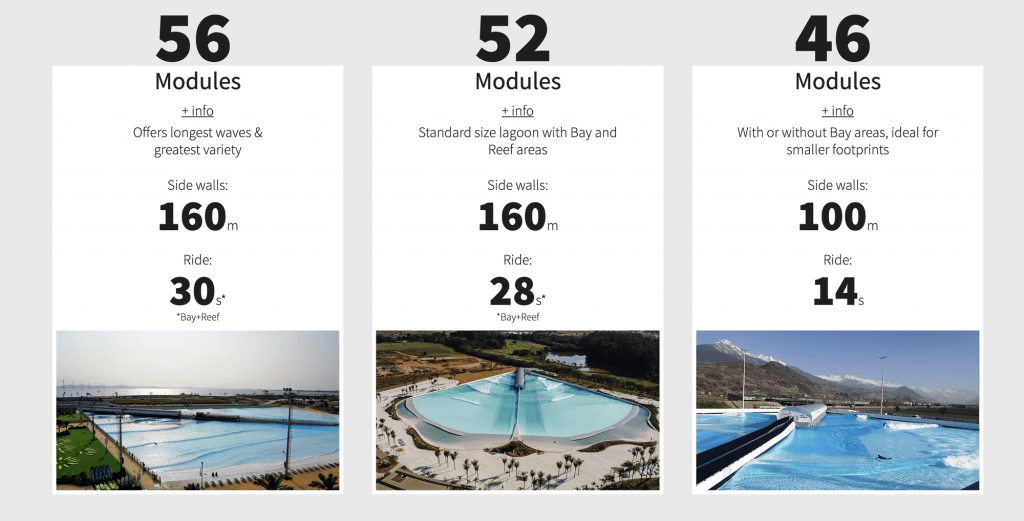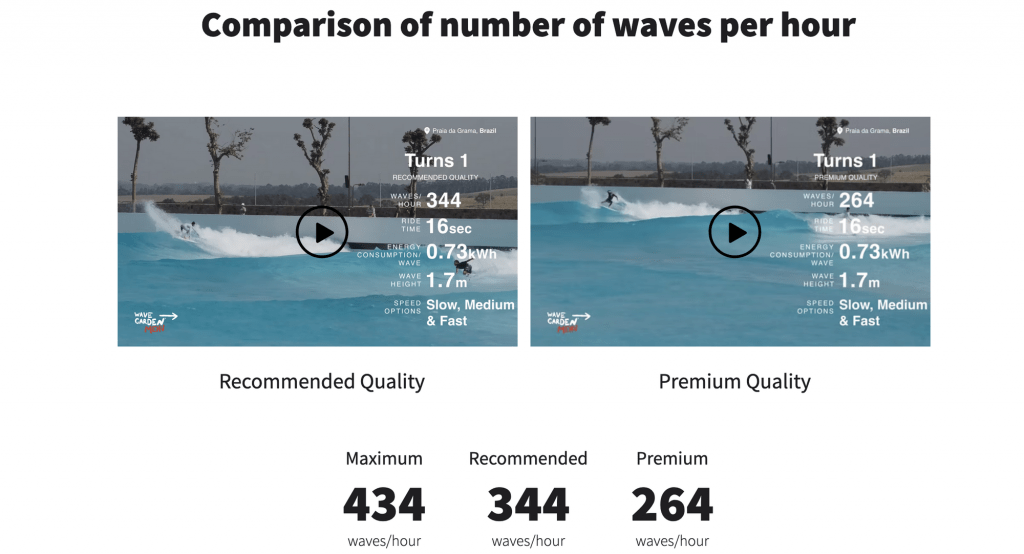Wavegarden opens up about wave menu, new settings

Wavegarden made public their wave menu this week, launching it with a snazzy cluster of social media clips featuring a new air wave. But the meat in thier announcement lies in what’s available to the average wave consumer. Let’s explore.
The company said the release includes the most relevant data for 26 wave settings. Each Wavegarden Cove facility differs slightly due to two factors: the size of the wave generator and the footprint of the pool. Coves are diamond shaped and have a “point” with an advanced takeoff zone next to the wall and a “Bay” which can be used to push beginners into whitewater waves.
Wavegarden pushes out waves via a system of modules. The more modules a wave pool has, the longer that central, cylindrical device running down the center, will be. It also means it can create a longer wave. For reference, Alaïa Bay has 46 modules (but no Bay), Urbnsurf has 46 modules, Praia da Grama has 52 modules and Wave Park leads the pack with 56 modules.
In this latest press release, the company emphasized that the number of waves-per-hour is what determines the maximum number of users per hour and that there is also a direct correlation between wave quantity and wave quality.
“The more waves that are created, the lower the wave quality due to increased currents,” the company said. “Therefore, Wavegarden publishes every wave type in the Wave Menu with three different frequency settings: maximum number of premium quality waves per hour, the recommended number of waves per hour and maximum number of waves per hour.”

In a standard Wavegarden facility they preprogram more than 20 different waves, catering for first-timers through to pros training for the Olympics.
“Our control system has a simple and intuitive interface. Waves are easily classified by their size, shape, verticality, peeling speed and angle, and grouped into customizable playlists to match all surfing levels. In addition, private and specialists à la carte sessions are also possible.”
Among the newly added waves are some barrel and air sections that will light up a social media channel near you soon.
“Our engineers have been extremely busy over the past few weeks programming new air and barrel waves,” said Wavegarden. “This work was carried out with the expert assistance of top pro surfers Yago Dora, Luke Swanson, Reef Heazlewood, Leo Fioravanti, Victor Bernardo and Dion Agius.”
The company said that the new air waves are ideal for straight airs, rotations, flips and alley-oops. But that they also have a softer wave with less pop to help with training purposes.
So does that mean that non-air surfers will now have the perfect training ground for learning aerials? Stay tuned.

Some background below on how Wavegarden quantifies their waves as listed on the Wavegarden website.
How do we calculate the number of waves per session?
The figures provided for wave quantity relate to the precise number of new waves, or swells, produced by the machinery during a 1-hour session. Even though one wave breaks in 4 different areas of the surfing lagoon as it moves shoreward, we do not multiply the sum by 4. We quote the precise number of waves created, not the number of rides by individual surfers.
How do we measure ride time?
Ride time is measured from the moment an intermediate shortboard surfer gets to their feet until their last possible maneuver (pros and longboarders can go further).
How many wave categories and wave types are there?
In total, there are more than 20 waves on the menu catering for first-timers through to professional athletes. The Wavegarden Cove technology offers 6 wave categories: Bays, Waikiki, Malibu, Turns, Barrels, and Airs. Each wave type comes in 3-4 different sizes and 2-3 different peeling speeds. This variety is essential for the development of surfing skills for learning, cruising, open-face maneuvers, tube riding, and aerials. This helps establish a pathway of progression and encourages repeat visits. It also provides complete flexibility for private sessions and surf competitions. The wave generator machine is controlled by sophisticated software that allows easily customized wave playlists perfect for all levels.
Related Coverage
